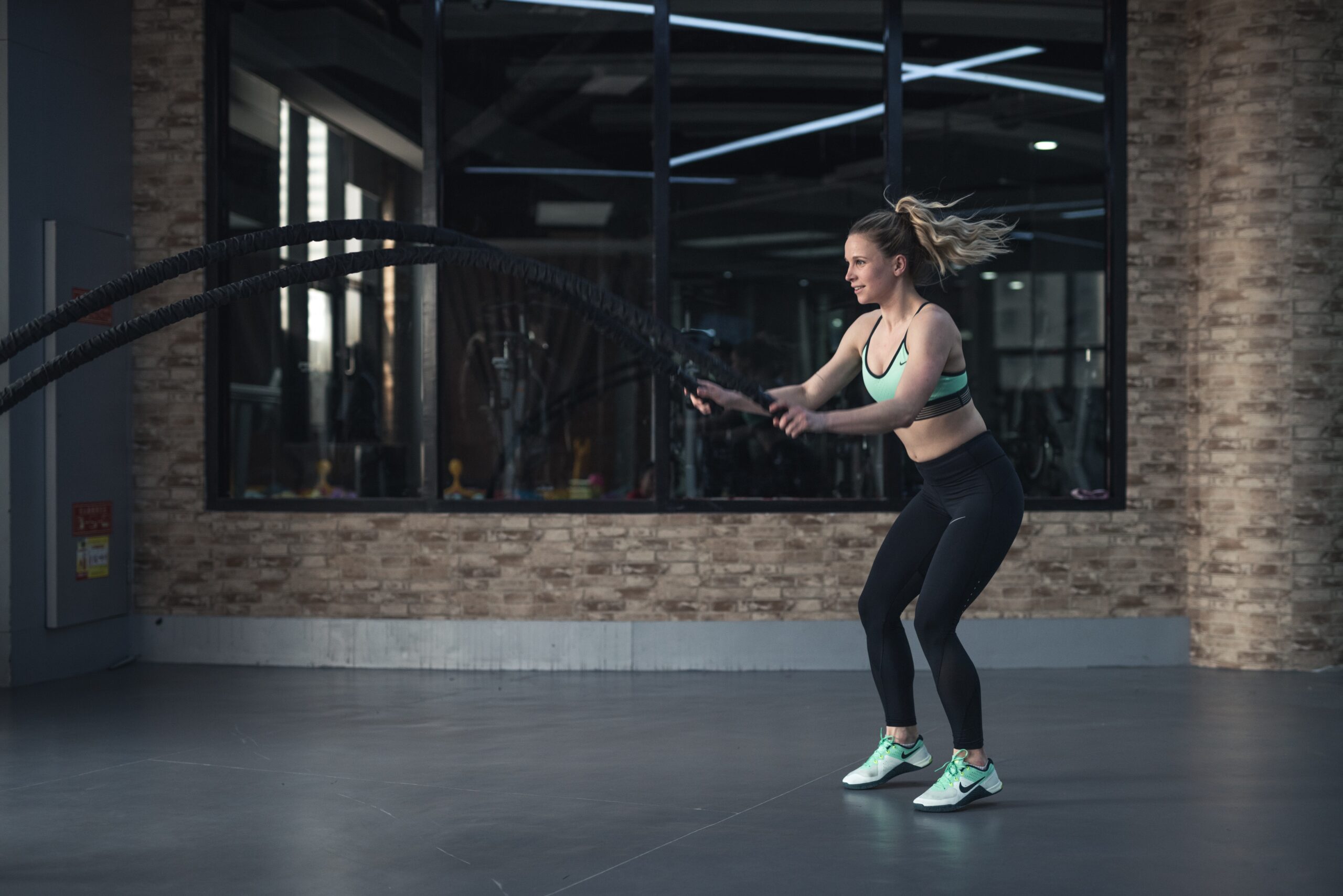Photo by Li Sun from Pexels
HIIT stands for high-intensity interval training, which consists of short sprint intervals coupled with low-moderate intensity work (or sometimes rest) (Chris & Eric Martinez, 2014). The great thing about HIIT training is that it can be performed with endless modalities. Running, biking, rowing, kettlebells, free weights, and body weight exercises are only a handful of options.
What are the benefits?
- Time Efficient: One of the biggest reasons why people do not exercise is a lack of time. A major advantage of HIIT training is that you can accomplish the same (or even greater) benefits that you would during steady-state exercise, but in half the amount of time. There have been numerous studies comparing the exercise induced benefits of HIIT versus steady-state exercise, and HIIT typically comes out on top. Trapp et al. found that when comparing 15 weeks of 3 weekly cycling sessions consisting of either HIIT (20-minute bout with an 8:12 second work:rest ratio) or continuous cycling (40-minute bout at 60% of an individual’s VO2peak [maximal aerobic capacity]); only the HIIT group saw significant decreases in total body mass and body fat (particularly in the abdominal region). This is despite the fact that there were no significant differences between the number of calories burned in the HIIT and continuous cycling groups. However, both groups saw significant improvements in insulin sensitivity and aerobic capacity, so steady-state exercise is by no means useless.
- Fat loss- The above study suggests that HIIT training is superior for fat loss, but why? According to Perry et al., HIIT training leads to increases in the number of mitochondria in our muscle, and mitochondria are responsible for oxidizing (burning) fat. Although there are many factors that impact our body’s ability to burn fat, having a greater number of mitochondria increases our body’s fat burning capacity. These changes in metabolism are one reason why HIIT is training superior to steady-state training. Although a similar number of calories may be burned during HIIT and steady-state training, high-intensity training produces physiological changes in muscle which result in fat loss over time.
- Muscle retention- Sure, muscle makes you look and feel great, but it does so much more. Those with more muscle mass have better blood sugar control, burn more calories at rest, and even have a lower all-cause mortality risk (Mark Sisson; Srikanthan, 2014). A study by Wilson et al. found that those performing HIIT training retained muscle, while those performing steady-state exercise lost muscle. This is only one of multiple studies which show similar findings and is likely due to the intense nature of HIIT training and the muscle damage that it causes. Muscle damage (followed by recovery) is required for muscle building.
At this point you are probably thinking you should only engage in HIIT and never do steady-state cardio again, but this is not the case. Both exercise modalities have their place, and individuals have different goals and limitations. For example, many have valid orthopedic or cardiac issues which would prevent them from being able to safely engage in HIIT. Additionally, performing HIIT 7 days per week would eventually negatively impact strength training gains, as your muscle would not be given the opportunity to properly recover.
If you are already active and training most days of the week, HIIT training should be strategically incorporated into your training regimen. If you like to perform cardio at the end of your lifting workouts, perform HIIT to help retain muscle; and if you do not like to take full rest days, perform lower intensity steady-state cardio on your “off” days to burn some extra calories throughout the week. If you are not currently exercising, this information should help you realize that you do not need an hour block out of your schedule to receive the benefits of exercise. Even 20 minutes of HIIT performed 3 days per week is enough to see benefits like fat loss, improved metabolism, and improved blood sugar control.
12-minute body weight HIIT workout
Perform 3 rounds of the below exercises with a 20:40 second work:rest ratio.
- 20 seconds of burpees
- 40 second rest
- 20 seconds of mountain climbers
- 40 second rest
- 20 seconds of squat jumps
- 40 second rest
- 20 seconds of jumping jacks
- 40 second rest (back to burpees)
If you finish this workout and still feel like you need more, add more rounds! You can also switch up the work:rest ratio by going all out for 40 seconds and resting for 20 seconds. Feel free to incorporate any of your favorite exercises or make modifications as needed. The goal is to keep your heart rate elevated. This workout format can be used for dumbbell exercises such as thrusters, renegade rows, goblet squats, and lunges or (my personal favorite) kettlebell exercises such as swings, high pulls, cleans, and snatches.
References:
Metcalfe, R. S., Babraj, J. A., Fawkner, S. G., & Vollaard, N. B. (2012). Towards the minimal amount of exercise for improving metabolic health: beneficial effects of reduced-exertion high-intensity interval training. European journal of applied physiology, 112(7), 2767-2775.
Perry et al. Perry, C. G., Heigenhauser, G. J., Bonen, A., & Spriet, L. L. (2008). High-intensity aerobic interval training increases fat and carbohydrate metabolic capacities in human skeletal muscle. Applied Physiology, Nutrition, and Metabolism, 33(6), 1112-1123.
Srikanthan, P., & Karlamangla, A. S. (2014). Muscle mass index as a predictor of longevity in older adults. The American journal of medicine, 127(6), 547-553.
Trapp, E. G., Chisholm, D. J., Freund, J., & Boutcher, S. H. (2008). The effects of high-intensity intermittent exercise training on fat loss and fasting insulin levels of young women. International journal of obesity, 32(4), 684-691.
About the Author:
Grace Majchrowicz received her undergraduate degree in Exercise Science from Grove City College and her Master’s Degree in Exercise Science with a concentration in strength and conditioning from Indiana University of Pennsylvania. She is a Certified Strength and Conditioning Specialist through the National Strength and Conditioning Association and has designed and helped conduct research studies related to supplementation and performance, exercise and mood, and rest periods as they relate to gains in strength and power. Grace presented two of these research studies at the 2016 and 2017 Mid-Atlantic Regional Chapter meetings of the American College of Sports Medicine and is a published co-author in the Journal of Exercise and Nutrition. As a graduate assistant at Indiana University of Pennsylvania she provided personal training to local volunteer firefighters and performed fitness-based exercise testing for Pennsylvania Police Academy candidates. In her free time she enjoys hiking and spending time with her family.




